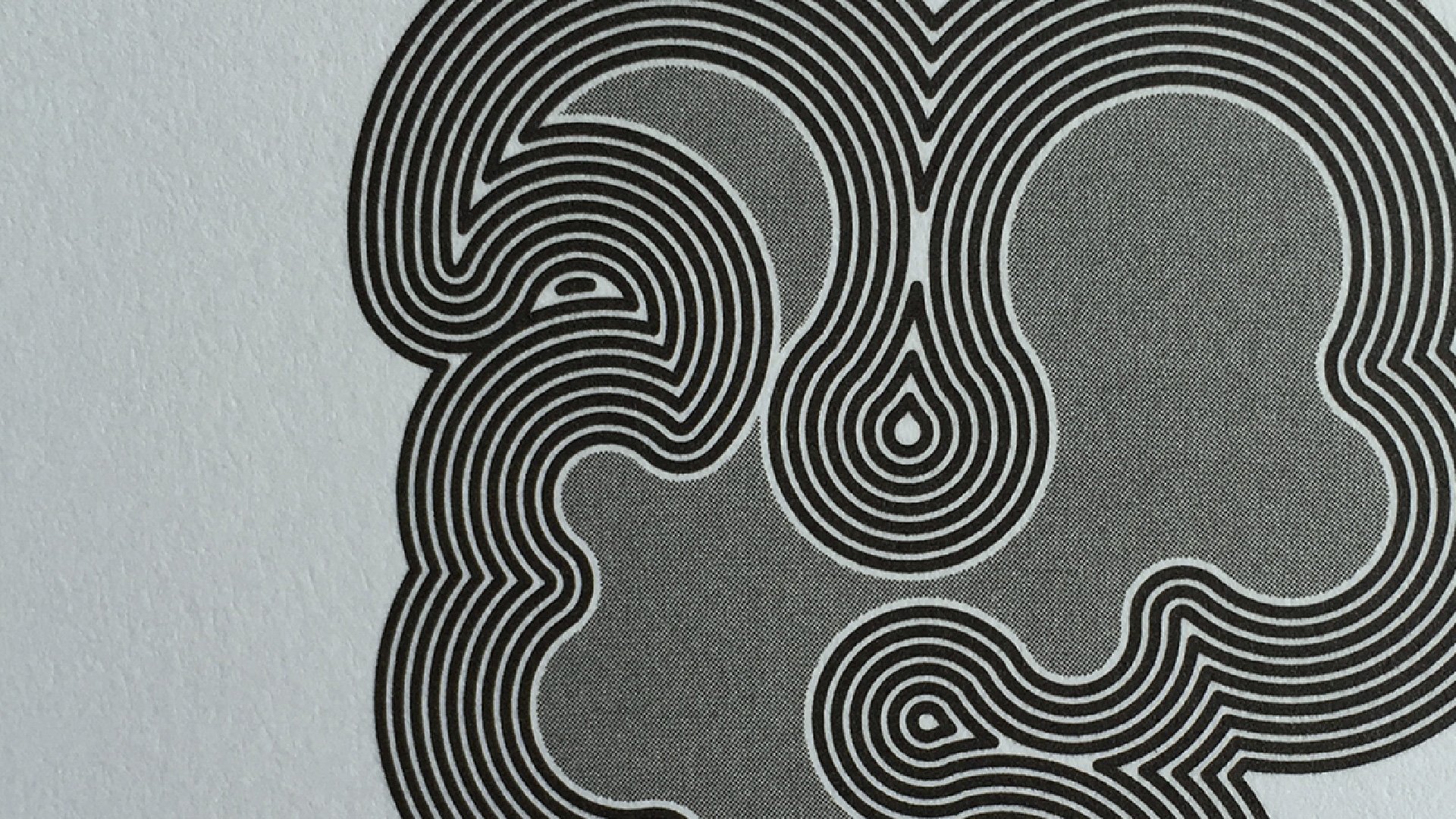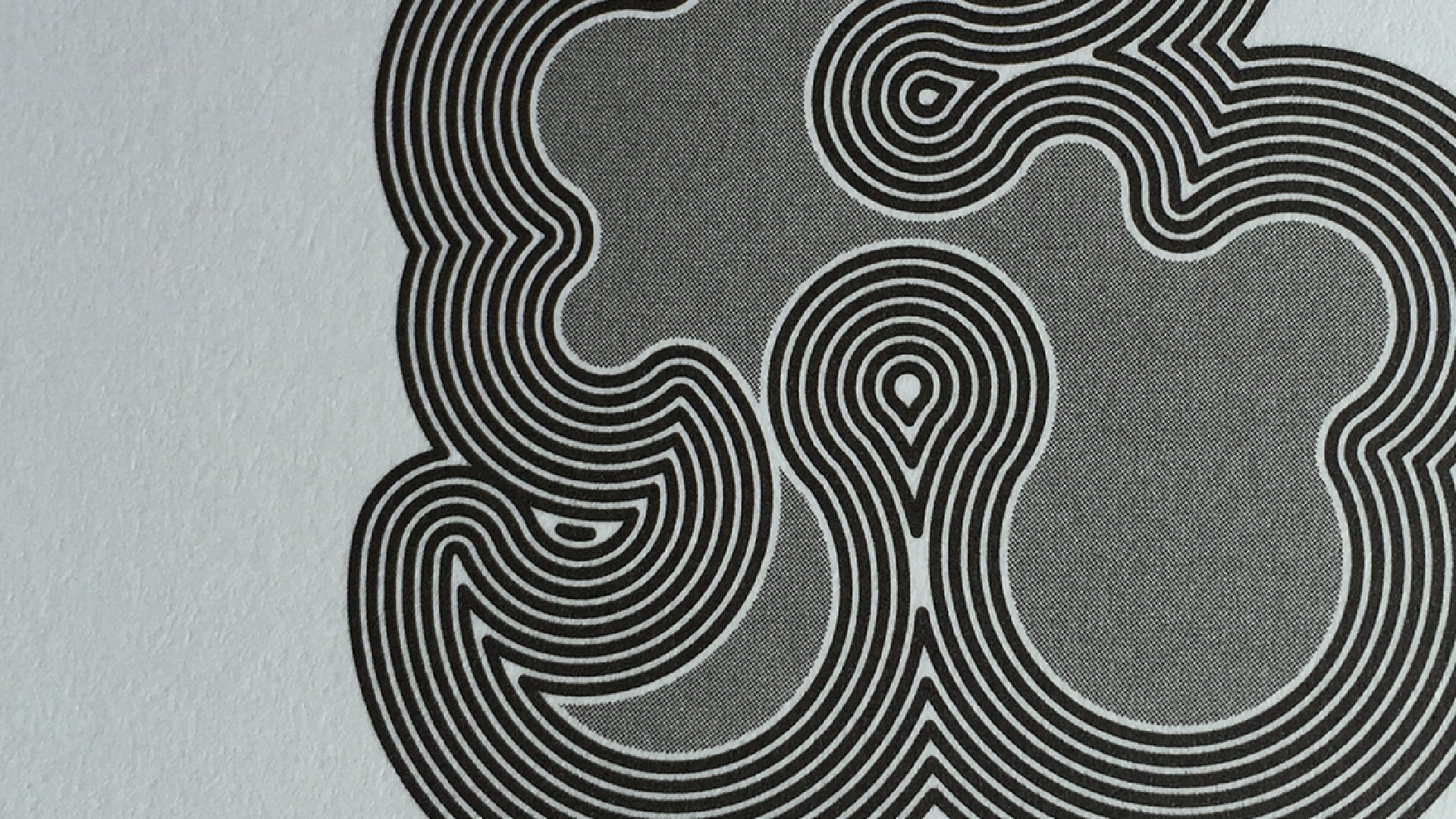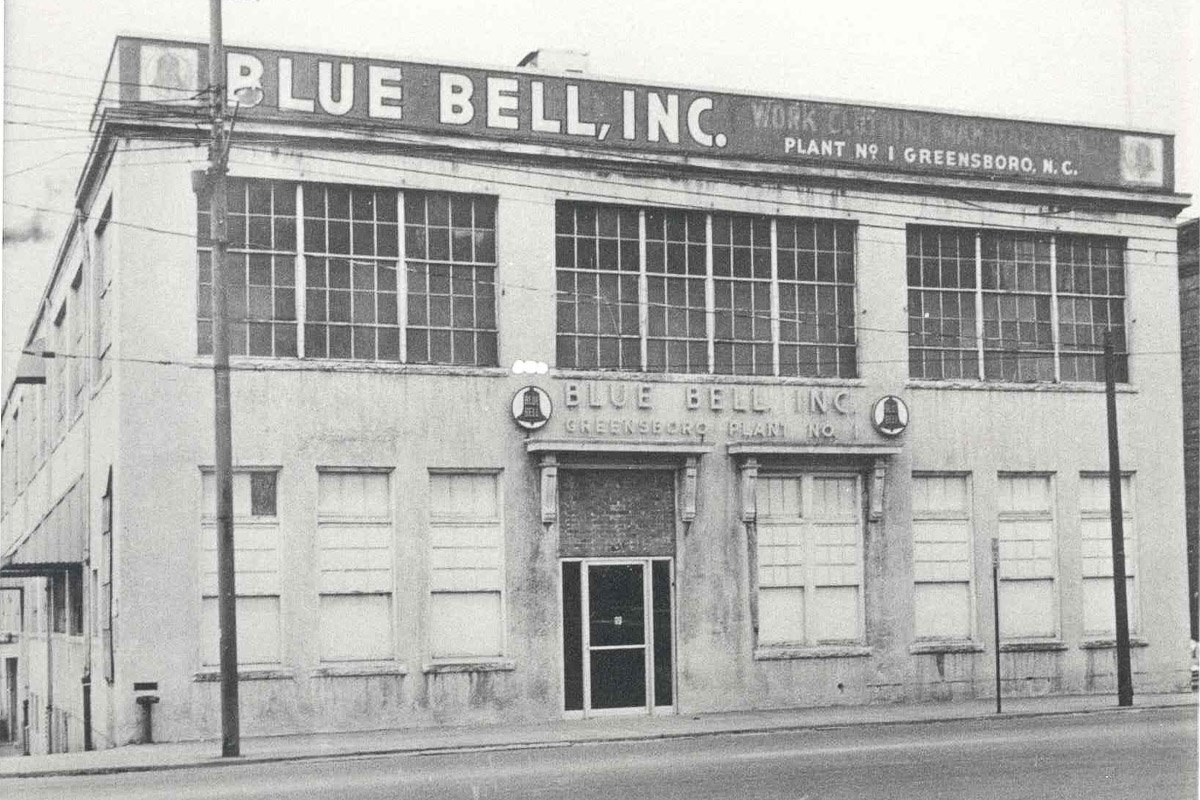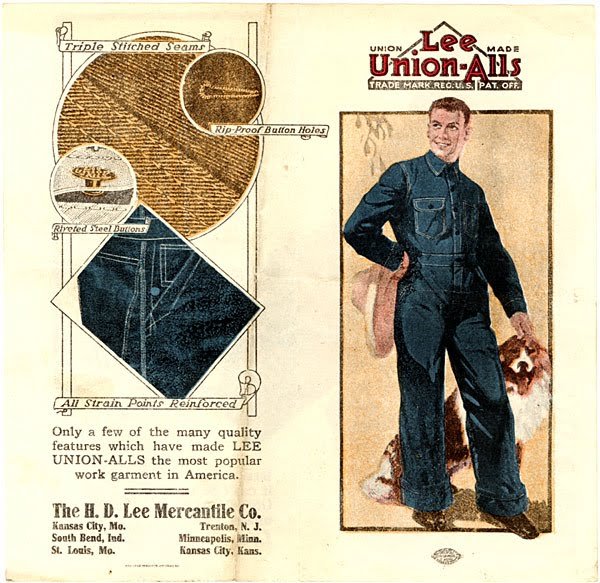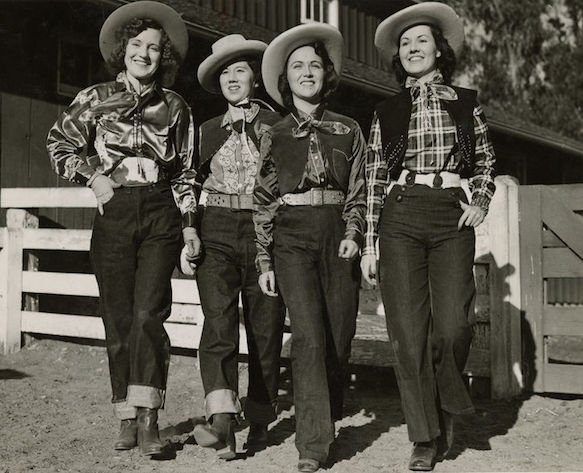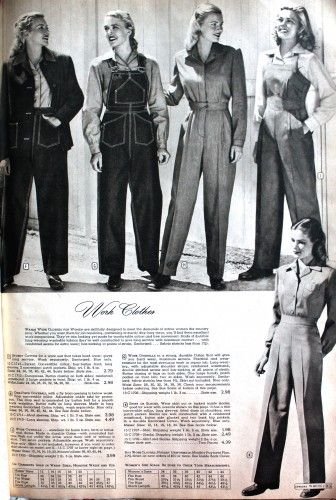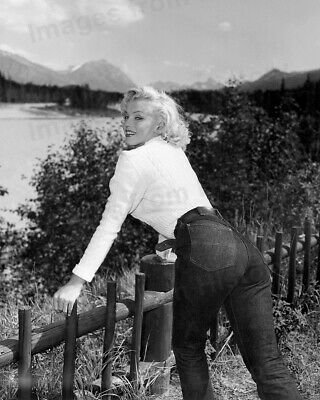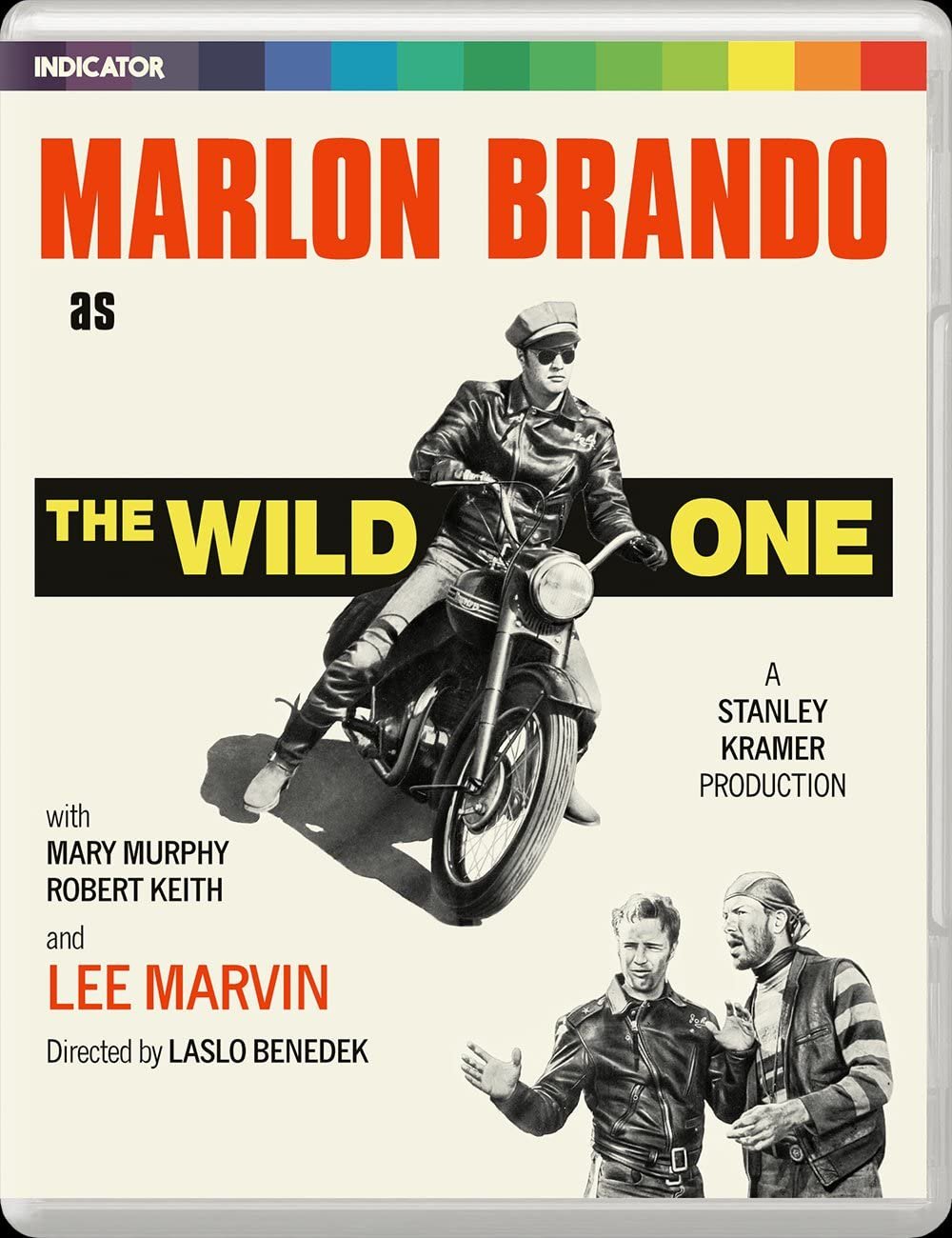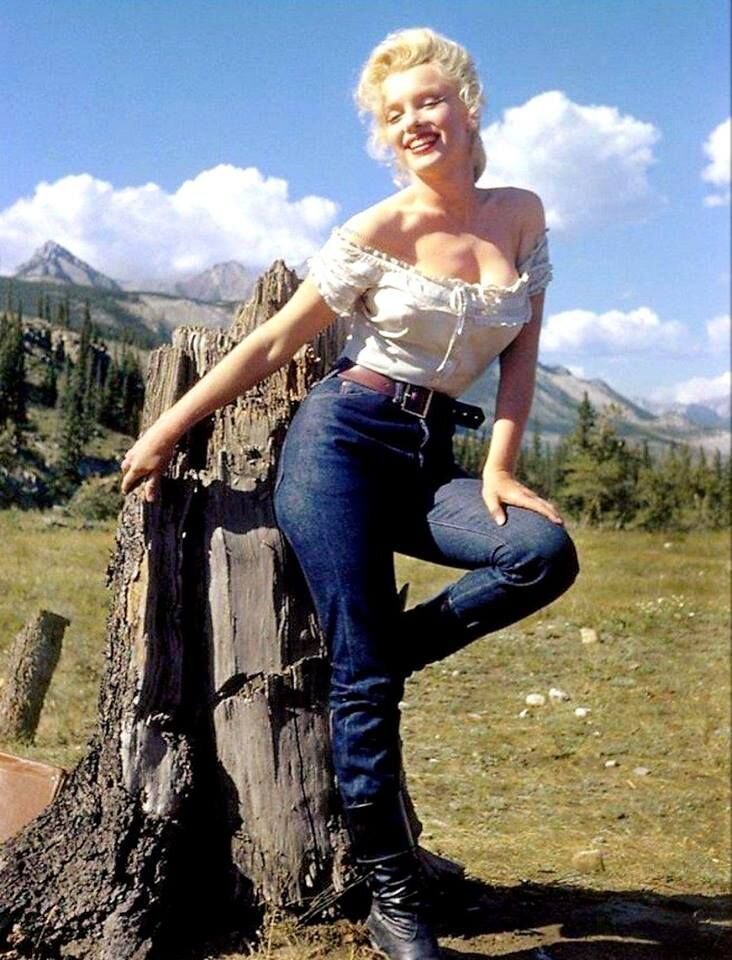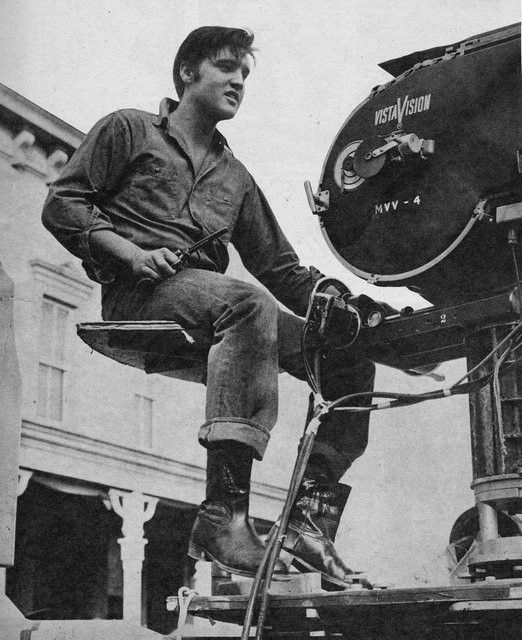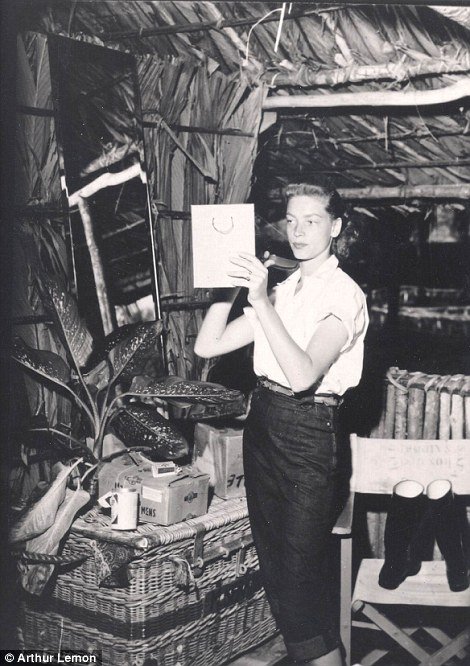The evolution of denim and jeans in the US continued (1890 - 1950s):
Back to Levi’s, and the on-boarding of the competition
In 1890 the Levis XX model was given the style name Lot No. “501” (see pictures below).
It had only one back pocket, and the iconic leather patch featuring the two horse brand logo (a pair of jeans suspended between two horses pulling in opposite directions).
Levi’s XX model, style name Lot No. “501”. 1890
Levi’s XX model, style name Lot No. “501”. circa 1890
Two back pockets were introduced in 1901. Notice the hand of the denim in the XX model above (and below), and how it bears a closer similarity to some of the dual ring spun denim coming out of Japan today and priced at $300+ at retail, a different kind of denim to the mass market produce that’s so ubiquitous today.
To reiterate, the key difference is in the spinning of the yarn. The Levi’s 1890’s pairs are dual-ring-spun.
The other crucial difference is in the dyeing (again, the Levi’s 1890’s pairs are dyed by the traditional method, they’re either hank or skein, or rope-dyed).
The oldest pair of rivet-reinforced jeans ever to be discovered was a Levi Strauss & Co. XX model 501 Jeans, which dates back to 1883. It was discovered in the 1997 and auctioned in 2005 to an anonymous Japanese collector for $60,000.
__________
However soon after, in 1890, the Levi’s patent on the rivet expired. Osh Kosh B’Gosh was founded in 1896, and soon known for its hickory striped overalls and also bibbed overalls for children.
Blue Bell Inc. (later the Hudson Jean Company, then Wrangler) was founded in 1904, Lee Mercantile in 1912.
Belt loops were added in 1922, zippers replaced the button fly in 1920 (the button fly then had a later resurgence in the 1950s), in 1937 back pocket rivets were moved to the inside as a result of complaints about damaging school chairs, but by 1960 the back pocket rivets were replaced altogether by the bar-tac.
During the 1st World War (1914-18) Lee Union-All jeans were standard issue for all war workers.
Vintage Oshkosh hickory striped overalls
Bluebell Inc. (Wrangler) building, circa 1910
The historic 1912 Lee Mercantile Building on the corner of East Broadway street and Main street in the Mount Pleasant district of Vancouver, B.C. (Canada). 1919
Lee “Union Alls" were standard issue for all war workers during the first world war
Levi’s “Freedom Alls" denim overalls for ladies. 1918
Levis Freedom-Alls for women was a one-piece garment introduced in 1918, where the name celebrated the end of the war but also the freedom of movement offered to women- who were meant to wear them both for work and recreation.
However this first of Levi’s forays into ladies’ jeanswear wasn’t a success- probably due to the then resistance around women wearing pants in public, but also the silhouette, being a tunic waist up and balloon pant jeans waist down, just wasn’t too flattering.
__________
The golden age of the dude ranch, and the evolution of denim in the 1920s and ‘30s
To continue the story, post the sky rocketing in demand for jeans as workwear- as adopted by miners and railroad workers- post the Levis/Davis patent of 1873- the demand for jeans also spread to factories, what with the rapid onset of industrialisation in the US.
But in the West, ranching and agriculture soon followed the mining, and suddenly it was jeans as Westernwear, for ranch hands and cowboys.
In the 1920s and ‘30s there was a Romanticisation of the American West that started to take hold, in part fuelled by the movies.
For in the silent Westerns of the ‘20s and ‘30s the cowboys wore jeans and people were inspired.
– Something to do with the rugged glamour of denim clad Gary Cooper, and John Wayne.
Then it was the wide vacant horizons, the cinematic dust, the horses, the jeans.
Now that the reality of gun slinging ways was gone, the nostalgia could be explored without the risk of shoot outs. And wealthy East Coasters wanted to experience it all for themselves.
The Wild West was duly revered and romanticised, and then commercialised.
And the golden age of the ‘Dude Ranch’ had begun.
Gary Cooper, 1920s
John Wayne, 1920s
John Wayne, Stagecoach. 1939
Guests at a Dude Ranch. 1920s
Women at a Dude Ranch, 1920s
Book cover on a book on Dude Ranches, published 1925
A dude ranch is a working horse or cattle ranch that takes in paying guests, ranging from the rustic to the resort like.
Dude ranch holidays peaked in the 1920s to ‘30s, offering a ‘back to nature’ retreat for wealthy East Coasters. At the upper end they were elaborate commercial enterprises offering all kinds of creature comforts, and East Coast vacationers went to their outfitters to get kitted out in dude ranch wear/ western gear- part of which was jeans- a new form of holiday wear, and fit for purpose.
Visitors were often the tired urbanites from the Eastern states, or also from European cities, and women- either alone or with their families- visited dude ranches in large numbers, hence the dude ranch also became synonymous with the quickie divorce.
As locals converted their properties to take in paying guests, cowboys who used to wrangle cattle started wrangling tourists instead. Male vacationers were ‘dudes’ (someone who came out West to enjoy life on a ranch), and the women were ‘dudines’.
And although ladies wearing jeans was most definitely a ‘statement’- a subversive one - for jeans were still strongly associated with labourers and the working class (at a time when class and cultural distinctions were rigid)- Levis introduced Lady Levis, called Lot 701, in 1934 [before which time ladies in jeans will have been wearing men’s], and started selling them in select East Coast stores including in New York well before they’d officially expanded to the East Coast as a brand.
Lady Levi’s LOT No. “701”, 1934
Ad for Lady Levi’s, 1950s
__________
The 1930s, women in jeans and Lady Levis
Ginger Rogers and Carole Lombard wore jeans in publicity shots in the 1930s, and a 1935 US Vogue article on ‘Dude Ranch Chic’ (featuring its first model in denim on the cover) gave its seal of approval to the cause and talks about a pair of Lady Levis being the thing to wear when vacationing on a Dude Ranch when out West.
This was emblematic of a then transitioning mood around denim as rugged work wear for the working classes to something potentially more aspirational.
In 1939 the film “Women” cast a female cast in denim to signal the rebellious, sexual and powerful nature of its female characters (see below).
In 1943 US designer Claire McCardell sold more than 75,000 of her denim popover wrap dress, with a then unknown Lauren Bacall featured wearing it on the cover of Harper’s Bazaar.
“Ginger Rogers Goes Rustic”, 1930s
“Ginger Roger Goes Rustic”, 1930s
Carole Lombard on set, 1930s
Excerpt from Levi’s R&D catalogue on US Vogue’s May 15, 1935 article on women in Levi’s and Dude Ranch Chic
The female cast in jeans, in the 1939 film “Women”
The Museum at FIT, “Denim: Fashion’s Frontier.” Reproduction of Claire McCardell “Popover Dress”
Lauren Bacall on the cover of US Harper’s Bazaar, 1942 - wearing a version of Claire McCardell’s “Popover Dress”
The Museum at FIT, “Denim: Fashion’s Frontier.” Vintage denim dress, 1940s
The Museum at FIT, “Denim: Fashion’s Frontier.” Vintage denim dress, 1940s
__________
Jeans as a symbol of the war effort (World War II)
During World War II (1939-1945) blue jeans were declared an ‘essential’ commodity and were sold only to those in military or war-related work.
American women were called upon to help in factories and other manual-labour-intensive jobs, and denim clad women in overalls became a symbol of the war effort.
During and after the war, American G.I.s took their blue jeans with them overseas- and would wear them off duty in Europe and Japan to show that they were Americans.
Blue jeans became a cultural signifier of the US flag and of American culture abroad, and also of that more forward, relaxed, happier way of life.
World War II poster “We Can Do It!"
Female factory workers in their denim overalls, 1940s
Fashion Editorial on “Work Clothes”, 1940s
War effort (World War II): women in denim overalls
War effort (World War II): men in denim overalls
American G.I.s on their way home from abroad, 1940s
__________
Post-war 1940s USA, the youth-quake, and women and bad boys in denim, the beginning of the counterculture
Post-war 1940s saw the beginning of the ‘youth-quake’ (the explosion of youth energy in the US),
and also women’s lib – with women appropriating a man’s workwear garment as a sign of rebellion, feminine strength and gender equality.
At the same time there was also the sexualisation of both the male and the female figure in denim- jeans were creating a figure flattering silhouette in every area, hips, butt, legs, crotch, ankles, midriff – they were (and are) a uniquely democratic item.
Also in the post-war 1940s era jeans suddenly started being associated with bad boys, and became a symbol of rebellion- the beginning of the counterculture.
Marilyn Monroe in Levi’s. 1950s
Marilyn Monroe: Women who seek to be equal with men lack ambition. 1950s
Marilyn Monroe in Lee jeans. 1950s
Jeans sexualising the female figure: Marilyn Monroe in Lee jeans, River of No Return (1954)
__________
American GIs returning home often chose the racier high octane lifestyle of driving around on motorbikes in their jeans creating mischief and gaining a reputation rather than conforming to the post war steady diet of suburban etiquette and ideals.
With the explosion of the youth market in the ‘40s and ‘50s- a whole generation of misunderstood young men and boys who didn’t want to become their fathers, blue jeans came to symbolise angst- teen spirit, teen rebellion.
They also looked better unwashed, making the grade as a ‘statement’ as well as being the most practical thing to wear (harder-wearing, less need for washing, relatively cheap to buy).
And while the movies, the Westerns, had been romanticising the American West and the rugged bad boy-cowboy in denim for some time already, suddenly in the ‘50s Hollywood started putting in other of their racy, rebellious bad boy figures- and girls- in denim too in ways that resonated with the mood.
Marlon Brando (the then Hollywood major pin up, and role model) plays Johnny Strabbler, the leader of a trouble making motorcycle gang. He cuts a pretty impressive figure riding around on his 1950 GT Triumph Thunderbird, in leather jacket and Levis jeans in The Wild One (1953). “Hey Johnny, what are you rebelling against?” someone asks. His reply, “Whaddaya got?”.
In Rebel Without A Cause (1955), James Dean’s Lee 101 Riders (paired with a t-shirt and leather jacket) are specially dip-dyed to make the blue even more eye catching, in the early days of full colour when that was still a novelty, in a movie where the clothing stood out, and in an era when the movies and actors were even more influential than they are today. Dean, who shuns suburbia and craves adventure, was unquestionably a major influence on the teen culture during the era.
Pair that with the fact that Marilyn Monroe famously wears cuffed men’s jeans in three of her movies, Clash by Night (1952), the River of No Return (1954), then later in arguably her best movie, The Misfits (1961)- where indeed she plays a woman who went off with a group of—err-- cowboys. Part of the appeal there was that a woman was appropriating a garment originally intended for male labour. Jeans on the female body signified power, a certain rebelliousness and strength.
And then of course we mustn’t forget Elvis, who grew up on a farm, and almost always exclusively wore jeans.
Note also from these pictures (below) the hand of the denim, the depth of texture that’s visible, eye-catching even, when compared to much of the denim we see today.
Note also the depth of the cast- in the colour photos (it’s all dual ring spun and also rope-dyed denim).
The ensuing media portrayal of jeans led to them being banned in schools, in classrooms, which made them even more coveted and soon adopted as a symbol- and uniform- of the counterculture that was starting to happen.
It was the sharp contrast between the supporters of the Establishment and those in opposition (the counterculture).
Said cleavages in society saw their clear expression in the kind of clothes that people wore- the high end European couture style of dress as worn by the Establishment versus the racy, avant-garde youth styles notably jeans, which also started pushing back those long held traditional gender distinctions between menswear and women’s wear.
Marlon Brando on set, The Wild One (1953)
Marlon Brando on set, The Wild One (1953)
Marlon Brando as Johnny Strabler, with his cycle gang, in The Wild One (1953)
The Wild One, Poster. 1953
Marlon Brando on set, The Wild One (1953)
Marlon Brando. Casting photograph, A Streetcar Named Desire (1951)
__________
James Dean. On set, Rebel Without A Cause (1955)
James Dean. On set, Rebel Without A Cause (1955)
James Dean. Casting photograph, Giant (1956)
James Dean. Lee Ad. 1950s
Actress Leigh Taylor-Young wears James Dean’s actual Lee 101 Riders from Rebel Without A Cause
Film posters: Marlon Brando in The Wild One (1953), and James Dean in Rebel Without A Cause (1955)
__________
Marilyn Monroe. On set, The Misfits (1961)
Marilyn Monroe. On set, the River of No Return (1954)
Marilyn Monroe. Casting photograph (the River of No Return, 1954)
Marilyn Monroe sharing candy with a guy, 1950s
Marilyn Monroe. On set, The Misfits (1961)
Marilyn Monroe. On set, the River of No Return (1954)
Marilyn Monroe in a pair of men’s jeans, 1950s
Marilyn Monroe. On set, Clash by Night (1952)
Marilyn Monroe on set, The Misfits (1961)
Marilyn Monroe. On set, The Misfits (1961)
__________
Elvis in double denim. 1950s
Elvis in double denim. 1950s
Elvis in bespoke Levi’s double denim, performing Jail House Rock (1957)
Elvis and a double denim medley, 1950s
__________
Jeans and the suburban mom
Around the same time coming into the ‘50s we see ads for women’s ‘California Ranch Pants’ aimed at a somewhat suburban audience, noticeably the ‘suburban mom’. “I grew up in California and my mom was wearing jeans to the grocery store in the 50s and 60s, but in the East it was still considered a little too Western and working class for everyday wear. But a suburban mom having a barbecue in the back yard? That was OK.”
Some warned against denim. Anti-denim crusader Anne Fogarty who thought the fabric was unfeminine, in her book ‘Wife Dressing’ (1959) warns that if women want to keep their husbands they should never wear jeans.
Around the same time- with the continuing explosion of youth culture and the youth market in the ‘50s and ‘60s- Levis put near 100% of its energy into teenagers- and it was a different kind of jean. Teenagers did not want to wear what their moms were wearing.
Back at the ranch, 1950s
Back at the ranch, 1950s
Back at the ranch, 1950s
Back at the ranch, 1950s
Ladies’ overalls and jeans Editorial, early 1950s
Lauren Bacall in dark denim, 1950s
Brigitte Bardot in jeans and a sweater, 1957
Brigitte Bardot in jeans and a cotton shirt, 1950s
Sophia Loren plays a Western gal, in jeans. 1950s
Suburban mom tends her backyard, 1950s
__________
__________
site edited by Sheel Khemka BA (OXON)
© 2022.
